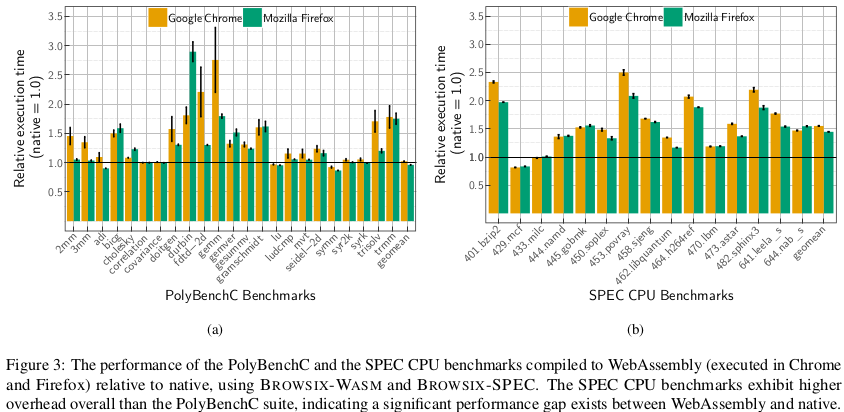
2019-06-11
The title says it all: the main point of the paper is that the claims made by the paper introducing WebAssembly1 are not as impressive as it seems; the authors argue that the benchmarks used (PolyBenchC) are not representative of typical WebAssembly use cases. It supports its claim by porting to the browser and benchmarking with the SPEC CPU benchmark suite (BROWSIX-SPEC) by developing an extension (BROWSIX-WASM) to BROWSIX, which exposes a Unix-compatible interface in the browser.
This evaluation confirms that WebAssembly does run faster than JavaScript (on average 1.3× faster across SPEC CPU). However, contrary to prior work, we find a substantial gap between Web- Assembly and native performance: code compiled to WebAssembly runs on average 1.55× slower in Chrome and 1.45× slower in Firefox than native code
Each benchmark was executed five times. We report the average of all running times and the standard error.
I’m not exactly sure how benchmarking should be done in an academic context, but I remember reading something about how using the average isn’t always good. Probably should investigate further.

How is it possible that in some cases, WebAssembly actually outperforms native code, especially since both are compiled with the same compiler (clang) but with different backends? Is JIT that good?
The takeaway seems to be that WebAssembly isn’t as fast as stated; but I don’t think this really matters in terms of real-world usage. As stated by the authors themselves, WebAssembly still achieves a 1.3x mean speedup over asm.js (matching the numbers reported in 2) with negligible JIT-compile times (see Table 2).